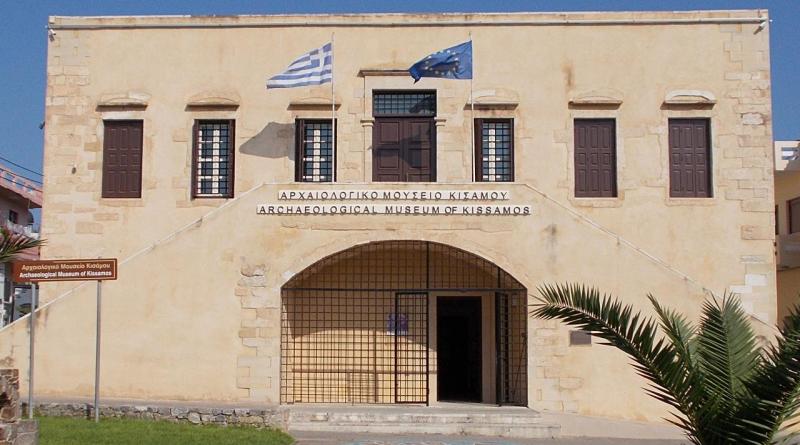Visit Archeological Museum of Kissamos
One day in Kissamos
The archaeological Museum of Kissamos belongs to the 25th (KE) Ephorate of Prehistoric and Classical Antiquities and it is situated in the namesake seaside little town of western Crete, below which ancient Kissamos is located.
It is housed in the old building of the Venetian-Turkish Headquarters which was inside the perimeter of the Venetian castle, fortified during the Turkish occupation. The exhibits of the Museum give an idea of the history in the wider region of Kissamos through the times, from the prehistoric era up to and including late antiquity, i.e. the early Christian period. The exhibition is split into sections based on chronological and local criteria and it takes up the ground and the first floor of the building. This way the visitor comes across the antiquities of the region in chronological order. Moreover, the findings are presented as excavation sets and thematical units. The exhibition of the Museum provides a lot of informational and educational material. To attract the visitors’ interest and give them a more in-depth look, there is an electronic presentation with research and evidence concerning the most devastating earthquake of antiquity in 365 AD that hit Crete and demolished Kissamos. Part of the ground floor with the domed-ceilinged rooms, already from 1937 had been given to the housing – exhibition of the Public Archaeological Collection founded in Kastelli in 1936, while the rest of the building housed at times mostly public services like the district court, the agricultural authority, the land registry, a library etc.
Later, after housing different services successively, more rooms were added to the original ones, so the largest part of the ground floor contained the ancient objects. This is when the 25th (KE) Ephorate of Prehistoric and Classical Antiquities started works for the extension – re-establishment of the Collection’s exhibition. The newer floor was gradually abandoned by the offices it hosted, deemed unsuitable.
In 1989 the building got included in the programme agreement between the Ministry of Culture – Fund of Archaeological Proceeds – Municipality of Kissamos, aiming to carry out studies, restoration and equipment works, in order to host several Collections (folklore, Byzantine icons and antiquities). Works to restore the Kissamos Headquarters building and convert it to an Archaeological Museum started in 2000, within the framework of the 2nd Cofinanced Development Programme. The project for exhibiting the antiquities in this new Museum was placed under the care of the Regional Operational Programme of Crete within the framework of the 3rd Cofinanced Development Programme. The works were finished, and the Museum opened its doors in September 2006. The exhibition of the Museum provides an idea of the history in the wider region of Kissamos through the times, from the prehistoric era up to and including late antiquity, i.e. the early Christian period. However, it gives special emphasis to the Roman city of Kissamos which takes up the entire floor. The exhibition is split into sections based on chronological and local criteria and it takes up the ground and the first floor of the building. This way the visitor comes across the antiquities fo the region in chronological order. Moreover, the findings are resented as excavation sets and thematical units. The exhibition of the Museum provides a lot of informational and educational material. Sections of the Exhibition




